Do your speakers sound muddled and echoey? Does the audio lack clarity during band practice or movie nights? You may need acoustic panels.
Strategic acoustic panel placement can transform any problematic room into an optimized listening space.
This guide will provide expert tips on absorption, diffusion, and bass trapping so you can tune your space like a pro.
Whether you have a home theater, music studio, or just want better acoustics, proper panel placement makes all the difference.
So let’s dive in and learn how to strategically place panels for superior sound.
Why Are Acoustic Panels Worth Installing?

Acoustic panels, also called sound panels or acoustical panels, are specially designed to absorb sound waves and reduce noise problems like echo and reverberation.
By mounting acoustic panels on key walls and ceilings, you can enhance sound clarity for music, conversations, home theater audio, and more.
Acoustic panels work by catching sound waves and preventing them from bouncing back into a room. This absorption minimizes excessive reflections that cause an echoey or boomy sound.
With strategic placement, acoustic panels create a balanced acoustics environment optimized for your needs.
What Are The Goals Of Acoustic Panel Placement?

The primary goal with any acoustic panel installation should be controlling sound reflections. You want to absorb and block problematic sound waves while allowing a balanced diffusion.
Well-placed panels can significantly reduce ambient noise levels for a quieter space.
Minimizing Echo and Reverb
They also minimize echoes, standing waves between parallel walls, and excessive reverb that muddies audio.
Proper placement focuses on catching early reflections at key angles before they compound. The aim is to create a tuned environment suited for sound clarity, not deaden the sound completely.
Where Should I Put Acoustic Panels In My Room?
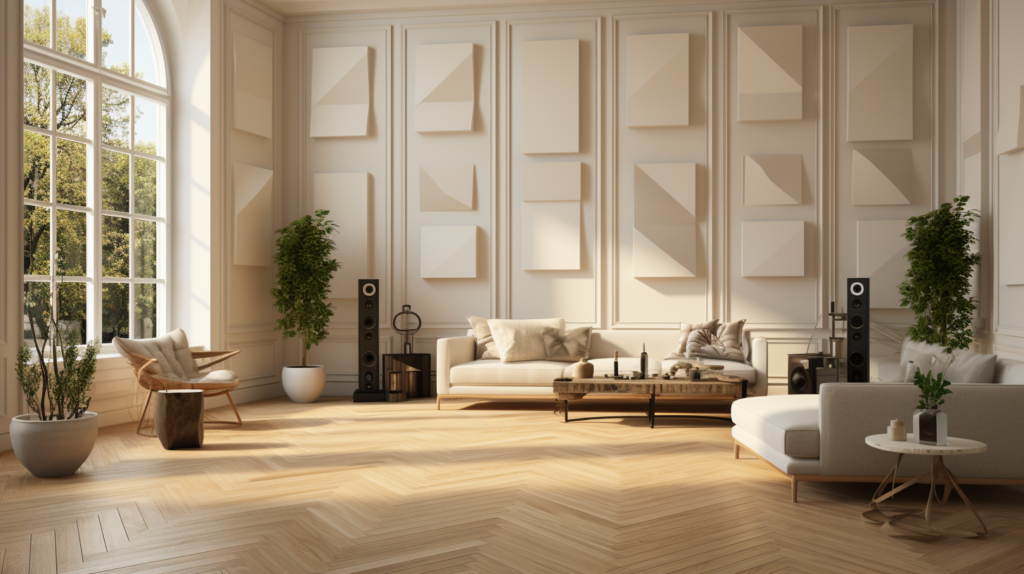
Deciding on placement locations is crucial for getting the most out of your acoustic panels. You want to target areas that will create the biggest impact on sound quality.
First Reflection Points
When considering where to place acoustic panels, prioritize the first reflection points on surrounding walls.
These are where sound waves first bounce off walls at an angle back to the listening position after leaving the speakers.
Installing acoustic panels at these locations will effectively absorb the prominent first reflections. This prevents an angular buildup of sound energy within the first 30-50 milliseconds of travel.
Reducing these early reflections is crucial for clear, articulate sound rather than uncontrolled reverberation.
Behind Sound Sources
Also focus on placing acoustic panels directly behind speakers and sound sources.
This catches sound waves straight from the origin before they have a chance to widely disperse through the room.
For most setups, the rear wall has prime real estate for absorption panels. However leave some wall space between panels to allow diffusion for a natural soundstage.
What Are The Best Walls For Acoustic Panels?
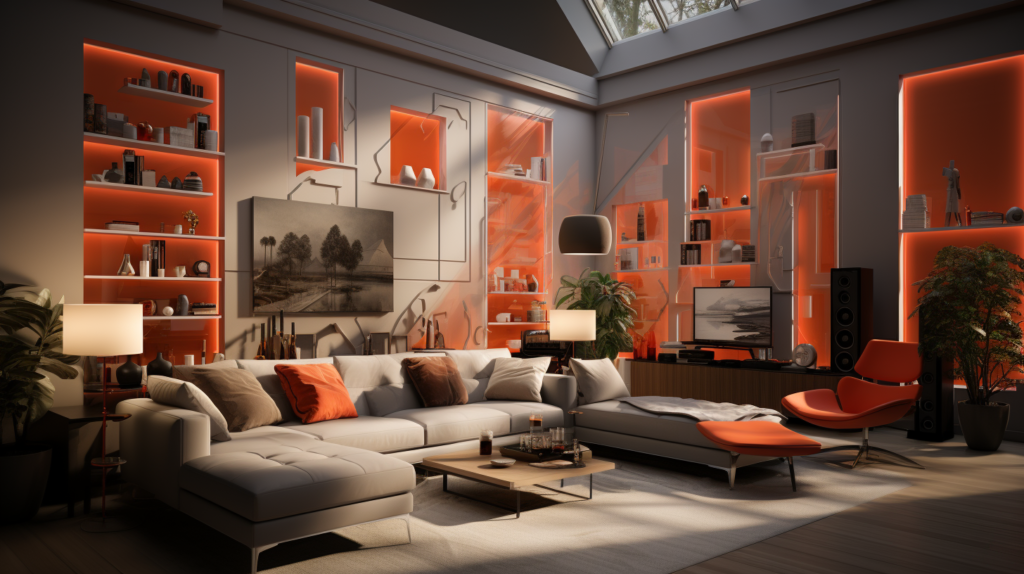
The walls that typically benefit most from acoustic treatment are: The rear wall behind speakers/monitors.
This is key for absorbing central sound propagation. Side walls at reflection points. Catch those angular first reflections for clarity.
Any large bare flat walls, especially parallel ones. These compound reflections. Walls with windows or glass, which reflect high frequencies.
Tiled, concrete or other hard materials that cause excessive reverb. Focus on whichever surfaces reflect the most sound based on their size, angle and material.
The goal is to catch reflections without over-deadening the space.
Where To Place Acoustic Panels To Reduce Noise?
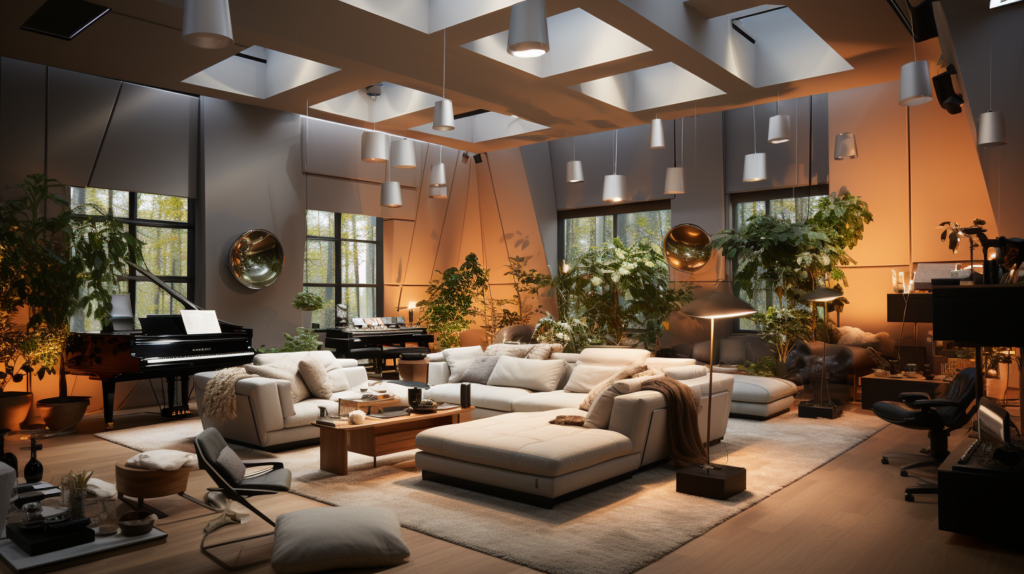
Strategic placement around noise sources is vital for controlling ambient sound. This contains sounds at the source before they spread.
Surround Noise Sources
To control ambient noise, look to surround the source with absorption panels.
Group panels around computers, televisions, speakers or any noisy equipment. For studios, create a vocal booth area with panels encapsulating the talent. This contains and prevents noise leakage.
Overhead Noise
Also target overhead noise sources like ventilation systems with acoustic clouds on ceilings. Place panels near ductwork, HVAC vents, or fans to muffle mechanical sounds.
Pay attention to problem frequencies and use appropriate thickness panels or bass traps.
How Do You Position Acoustic Panels On Walls?
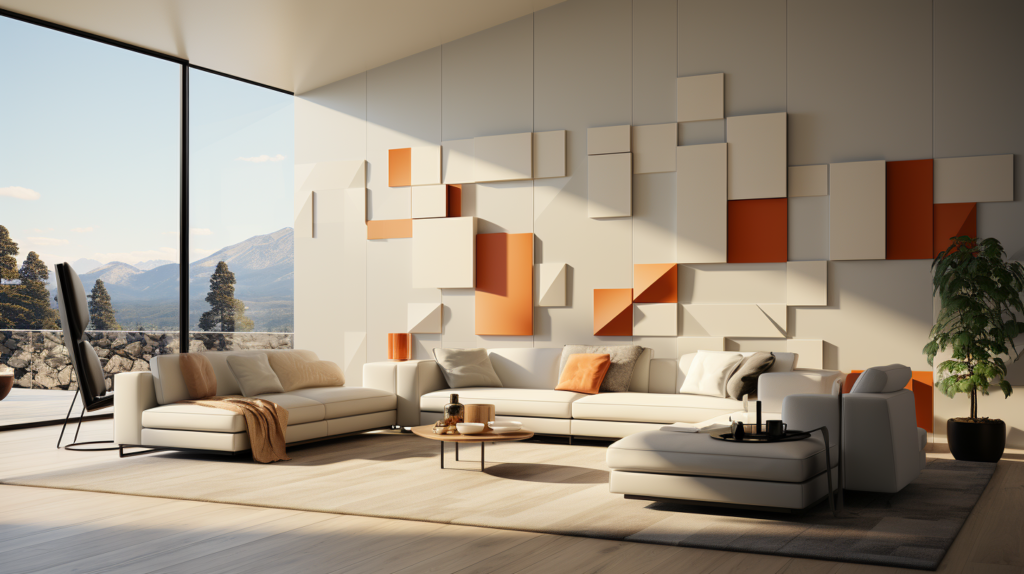
Proper positioning techniques optimize coverage and performance once you’ve chosen panel locations.
How Far Apart Should Acoustic Panels Be
When mounting multiple acoustic panels on a wall, it is important to leave an adequate gap between each panel.
A general rule of thumb is to space panels 2-4 inches apart. Allowing this small separation prevents the panels from excessively dampening the room.
The gaps permit some sound diffusion between panels for a more natural acoustic profile.
Spacing panels too close together can result in overdeadening, while gaps that are too wide can reduce absorption efficiency.
Finding the right balance depends on your specific room dimensions and acoustic goals. Test out different spacing options and analyze the resulting sound to optimize separation between panels.
Mounting Considerations
Place panels at least 2 feet from wall corners to avoid excessive dampening. Mount panels securely at least 1 inch off the wall surface for air gap effectiveness.
Angle panels where possible to catch sounds from multiple directions.
Tuning the Arrangement
Experiment with arrangements until you achieve the desired balance of absorption and diffusion. Analyze the space acoustically to pinpoint any lingering problem zones.
Where To Mount Acoustic Panels In A Home Studio?

Home studios require careful acoustic panel placement for quality sound. Priorities are: On the rear wall behind monitors/speakers. Side walls at reflection points toward mix position.
Ceiling area above listening sweet spot. Near talent microphone and vocal recording area. Around noisy computer workstations or equipment.
Aim for symmetry with angled panels catching early side reflections.
Leave some diffusion gaps between panels to avoid over-deadening. Corner bass traps can help tame low frequencies and resonant room modes as well.
How To Arrange Acoustic Panels For Best Sound?

Achieving proper balance requires carefully arranging panels and supplementing with other acoustic treatments.
Key Placement Guidelines
Optimizing acoustic panel arrangement takes some experimentation. Follow these guidelines: Prioritize absorption at first reflection points on side walls.
This is crucial. Treat room as symmetrically as possible for balanced soundstage. Combine absorption panels and diffusion panels strategically.
Leave calculated gaps between panels to prevent over-deadening.
Tuning and Analysis
Carefully test out different panel placements until you achieve the desired sound profile. Supplement panels with proper bass trapping techniques.
The goal is tuning the acoustics for sound quality and clarity, not completely eliminating reverb which sounds unnatural. Analyze the sound profile and continue adjusting until optimized.
Where Should Acoustic Panels Go In A Corner?
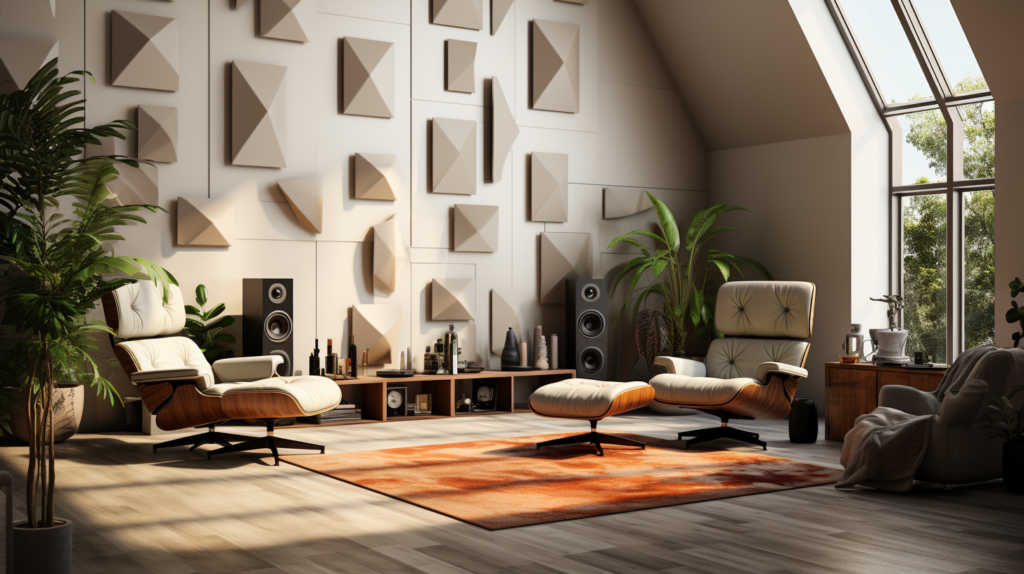
Bass traps and diffusers should be used in the corners
Bass Traps
Corner areas are prime real estate for acoustic panels. Floor-to-wall corners are ideal for bass trap placement.
These superchunk style absorbers combat low frequency buildup. Ceiling-to-wall corners can also host corner trap panels.
Diffusers
Alternatively, consider mounting triangular corner diffuser panels. These scatter low end instead of fully absorbing, providing a balanced bass sound.
Just avoid mounting absorption panels too close to corners which can over-dampen.
What Mounting Options Work For Acoustic Panels?

Acoustic panels can be installed in several ways: Adhesive mounting like command strips for lighter removable panels.
Screws or anchors for secure permanent direct wall mounting. Z-clip or L-bracket systems that lift off the wall surface. Ceiling hanging wires, chains or tracks for overhead panels.
Portable modular panels can stand on their own without mounting. Consider vibration, accessibility for wiring, and panel weight when choosing mounting methods.
Apply adhesive properly to avoid wall damage or panel falling.
How High To Hang Acoustic Panels

When hanging acoustic panels from ceilings, a good rule of thumb is to position them at mid-wall height.
For example, in a room with 8 ft high walls, hanging panels roughly 4 ft from the ceiling provides an effective absorption zone.
This mid-wall placement covers a broad area without impeding head room below the panels. Avoid positioning panels too high up the wall, as they will miss key angles for absorption.
Conversely, hanging panels too low can obstruct movement in the space. For most rooms, mounting acoustic panels directly in the vertical middle creates a suitable absorption zone at moderate wall heights.
Adjust height if ceiling dimensions are abnormal or if targeting first reflections at specific listening positions.
But in general, a mid-wall hanging height balances optimal sound absorption with room functionality.
What Are The Different Types Of Acoustic Panels?

There are a few core varieties of acoustic panels: Fabric wrapped fiberglass or mineral wool – Most common and cost effective.
Plastic, wood or composite rigid panels – More durable and design oriented. Modular panel systems – Portable and adjustable.
Printed graphic panels – Double as decorative art. Bass traps – Specifically target low frequency control. Diffusers – Disperse sound instead of absorbing.
Choose materials suitable for your budget, design scheme and sound needs. Layer different panel types for a complete acoustic profile.
What Key Points Should You Remember?

Place panels at first reflection points on walls for clarity. Mount absorption panels behind sound sources. Stagger panels evenly with calculated gaps.
Combine absorption and diffusion techniques. Experiment with arrangements until sound is optimized. Analyze your space to identify acoustic problems.
Use the right panels and mounts for your needs. Don’t over-deaden, leave some natural reverberation. Strategically placing acoustic panels makes a significant impact on sound control.
Follow these guidelines for ideal placement that balances absorption, diffusion and bass trapping. With proper acoustic treatment, you can achieve clear, quality sound.
Conclusion
Properly placing acoustic panels requires thoughtful consideration of your space, sound goals, and acoustic principles.
While it may take some experimentation to optimize, strategic panel positioning can work wonders.
Treat key reflection points, surround noise sources, leave diffusion gaps, and combine absorption with diffusion and bass trapping.
With the guidelines provided in this article, you now have the knowledge to strategically place acoustic panels for clear, balanced sound.
Take the time to analyze your space, test arrangements, and tune the acoustics through careful placement.
The reward will be a dialed-in listening environment optimized for your needs. Just remember – acoustic treatment is about controlling sound, not eliminating it completely. Follow these tips and use quality panels suited for your space. You will achieve professional-grade acoustics and your ears will thank you.
Frequently Asked Questions (FAQ)
How Close to Place Acoustic Panels
The optimal distance between acoustic panels and the sound source varies by setting. In home theaters, aim for a minimum of 3-5 feet from speakers or the listening area for balanced acoustics.
In professional studios, detailed measurements may determine specific distances. For noise control in larger spaces, place panels closer to the noise sources like air conditioning units or busy hallways.
How Far Apart Should Acoustic Panels Be
A general guideline is to space acoustic panels 2-4 inches on the front, rear, and side walls, apart for balanced sound absorption and diffusion.
However, for airborne soundproofing, we advise installing the acoustic panels side by side in a flushed manner.
This maximizes their soundproofing capabilities. Too close spacing can over-dampen the room, while too wide gaps can reduce absorption efficiency.
Polyester acoustic panels are versatile for different spacing needs, making them an excellent choice for various applications.
